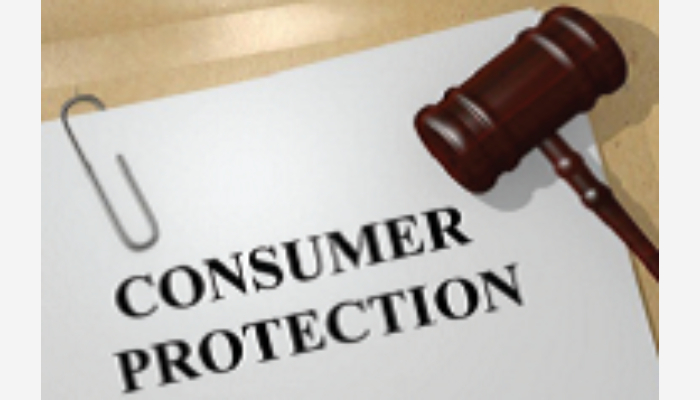
or

The Consumer Protection Act, 2019 (hereinafter referred to as the “CPA”) replaces more than three-decade old Consumer Protection Act, 1986 and has received the assent of the President. The CPA shall be effective on the date as may be notified, which notification is awaited. The genesis of the CPA is derived from the Consumer Protection Act, 1986 and has introduced below mentioned new concepts and the presumption is that this will lead to protecting the consumer in each and every aspect, thereby ensuring protection of “consumer rights” to the fullest:
The inclusion of “e-commerce” and “electronic service provider” within the ambit of CPA appears to be in pace with the evolving industries thereby attempting to cover the entire gamut for the consumers. Further the terms “endorsement” “product”, “product liability”, “product manufacturer” and “product seller” suggests the clear intention of the legislature to hold everyone involved in the chain, right from the manufacturer, endorser and seller liable for violation of any “consumer rights”.
The inclusion of mediation cell attached to each of the District Commission, State Commissions and to the National Commission, where consumer disputes can be referred by the respective Commission, may lead in speedy resolution of consumer issues.
The advisory council in the form of “the Central Consumer Protection Authority” (hereinafter referred to as the “CCPA”) to regulate matters relating to violation of rights of consumer, unfair trade practices, and false / misleading advertisement1/ endorsement2 which are prejudicial to the interest of public, consumer and to enforce the right of consumer as a class.
The flexibility of filing a complaint via electronic mode will provide the consumer the ease of initiation and pursuing their grievance.
The aforesaid inclusions are certainly a step forward in safeguarding and protecting the consumer however, the implications and effectiveness of the CPA will have to be tested from the point of view of other industries viz. the manufacturer, seller etc. of goods.
Under this article we are focusing on the requirements in compliance under the CPA in relation to “endorsement” vis-à-vis an “endorser”, the challenges thereto and the effect of non-compliance.
The CPA, does not specifically mention the do’s and don’ts which could act as a bible for the endorser whilst advertising / promoting any products or services. However, the endorser will be held liable under the CPA, if the CCPA pursuant to investigation is satisfied that the advertisement is false or misleading may impose a penalty of Rs. 10 Lakhs and subsequent contravention with Rs. 50 Lakhs. The CPA goes a step further and authorizes the CCPA to prohibit the endorser from making endorsement of any product or service for a period which may extend to one (1) year and subsequent contravention to three (3) years. It is pertinent to mention that the said prohibition on the endorser does not appear to be a restriction on the particular advertisement which has been found to be false or misleading but the prohibition appears to be on any and all advertisements endorsed by the said endorser. The only exemption to the given situation is if the endorser has exercised due diligence to verify the veracity of the claims made by the endorser in the advertisement regarding the product and services endorsed by the endorser.
This raises a few questions as the authority of the CCPA imposing prohibition on the endorser in case of a false or misleading advertisement amounts to restrain of trade? The exemption in the form of due diligence being conducted by the endorser also raises certain practical concerns viz.
The Central Government has not yet notified the Rules to the CPA and we can hope that the Rules will answer or put to rest and provide clarity on most of the aforesaid concerns.
The term “misleading advertisement”3 mentioned under the CPA is a term which may be another concern will be open for interpretation. For example, the endorser may advertise a toothpaste saying the same is good for teeth and despite using the toothpaste a consumer develops cavity may choose to sue the endorser for misleading advertisement whereas there is a possibility that the cavity has been developed due to other reasons.
The Central Government and the State Government have powers to make rules to the CPA. Once the rules are gazetted, there will be better clarity on certain aspects viz. due diligence by endorser, etc. In all the CPA appears to be a positive step towards reforming and developing consumer rights however, the real test for the CPA will be its implementation.
Tags: TMT Law Practice
Sapna has post graduated in Constitutional Law and has worked both on litigation and transactions. She has vast experience of 10 years in the media and entertainment sector and has been working on production-related transactions, distribution of channels, acquisition/licensing of content and copyright infringement cases, amongst others. Sapna is currently a Partner with TMT Law Practice.

Lex Witness Bureau

Lex Witness Bureau

Lex Witness Bureau

For over 10 years, since its inception in 2009 as a monthly, Lex Witness has become India’s most credible platform for the legal luminaries to opine, comment and share their views. more...
Connect Us:


The Grand Masters - A Corporate Counsel Legal Best Practices Summit Series
www.grandmasters.in | 8 Years & Counting
The Real Estate & Construction Legal Summit
www.rcls.in | 8 Years & Counting
The Information Technology Legal Summit
www.itlegalsummit.com | 8 Years & Counting
The Banking & Finance Legal Summit
www.bfls.in | 8 Years & Counting
The Media, Advertising and Entertainment Legal Summit
www.maels.in | 8 Years & Counting
The Pharma Legal & Compliance Summit
www.plcs.co.in | 8 Years & Counting
We at Lex Witness strategically assist firms in reaching out to the relevant audience sets through various knowledge sharing initiatives. Here are some more info decks for you to know us better.
Copyright © 2020 Lex Witness - India's 1st Magazine on Legal & Corporate Affairs Rights of Admission Reserved